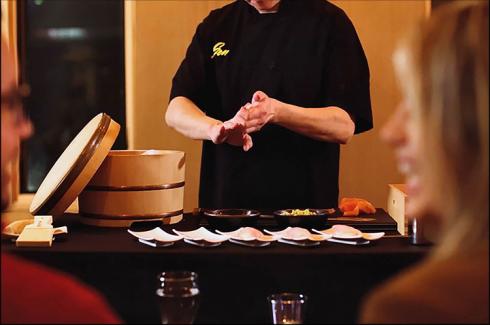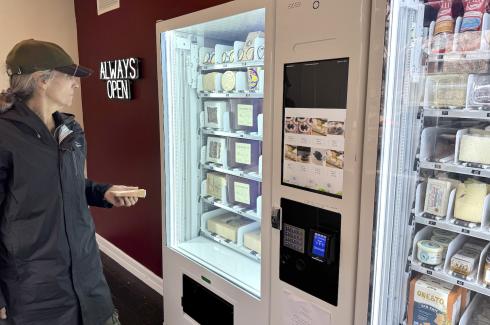How does an artist reconcile the traditions of early landscape photographers with the imperatives of contemporary art? In the case of Thomas Joshua Cooper, he uses the best of both to invent something that is both paean and disruption.In an exhibition titled “Refuge” opening at the Parrish Art Museum in Water Mill on Sunday, his work will demonstrate how a photographer can express the nature and essence of a place without specifically identifying it visually. To do this, Mr. Cooper approaches his projects as expeditions, treating the Atlantic Seaboard the way photographers such as Timothy H. O’Sullivan and Carleton Watkins treated the American West in their explorations. He researches the history of a region before he immerses himself there over several days, spending time at a specific site before ever closing the shutter on an image in his 1898 Agfa field camera. He uses only one large-format negative to record a location and then makes his own 30-by-40-inch selenium-toned gelatin silver prints.Although the photographer has ranged all along the East Coast in his 50-year career, he had never been to the East End until 2016, when he was commissioned by the Lannan Foundation along with the Parrish to explore the area’s waterways and interior. Those 21 images form the spine of the show, joined by other images he made between 1998 and 2018, including depictions of the Hudson River Valley, Boston and Cape Cod, and other locales.While the meaning Mr. Cooper finds is often expressed visually by a generic wave or unidentifiable feature of the landscape, for his titles he makes great effort in using a site’s description. “ ‘The Cut’ at the North Atlantic Ocean, Flying Point Beach, Water Mill, Southampton Township (South Fork), Suffolk County, Long Island, New York” is one such title, and for all that specificity, a viewer might expect more than a generic sandbar. Yet the moody gray depiction serves up a pleasing tonality along with its postmodern irony. His site selections typically result from a place’s history as it moved from Native American occupation through successive waves of immigrants, as the Parrish’s executive director, Terrie Sultan, noted. “Each has been a significant socio-economic driver for trade, manufacture, and shipping, and has nurtured nascent artist communities in the 19th and 20th centuries.” It’s a relationship between history and ecology that “holds great personal significance as a visual and emotional continuum of his sense of place in the world,” according to Ms. Sultan. A fully illustrated catalog accompanies the exhibition, which will remain on view through July 28.
News for Foodies: Tuna and Omakase
Sen restaurant will host a tuna breakdown demonstration and a 13-course omakase dinner.
Say Cheese (or Caviar), Day or Night
Self Provisions, a storefront attached to Cavaniola’s Gourmet Cheese in Sag Harbor, is “always open,” as is proclaimed by an illuminated sign on the wall at the entrance. Two large, brightly lit vending machines dominate the space, with offerings ranging from sea salt crackers and slabs of French butter to jars of caviar and curated gift boxes — and, of course, cheese.
New Year’s Eve at Almond
Almond restaurant in Bridgehampton will celebrate New Year’s Eve with a locally sourced five-course prix fixe dinner that will include party favors and a champagne toast.
Your support for The East Hampton Star helps us deliver the news, arts, and community information you need. Whether you are an online subscriber, get the paper in the mail, delivered to your door in Manhattan, or are just passing through, every reader counts. We value you for being part of The Star family.
Your subscription to The Star does more than get you great arts, news, sports, and outdoors stories. It makes everything we do possible.




